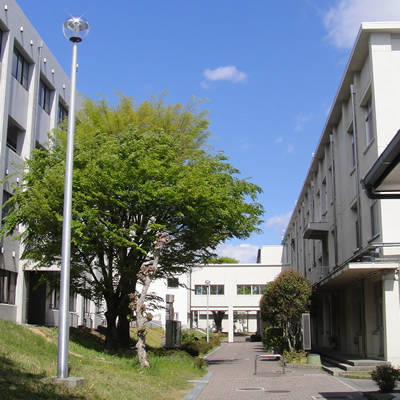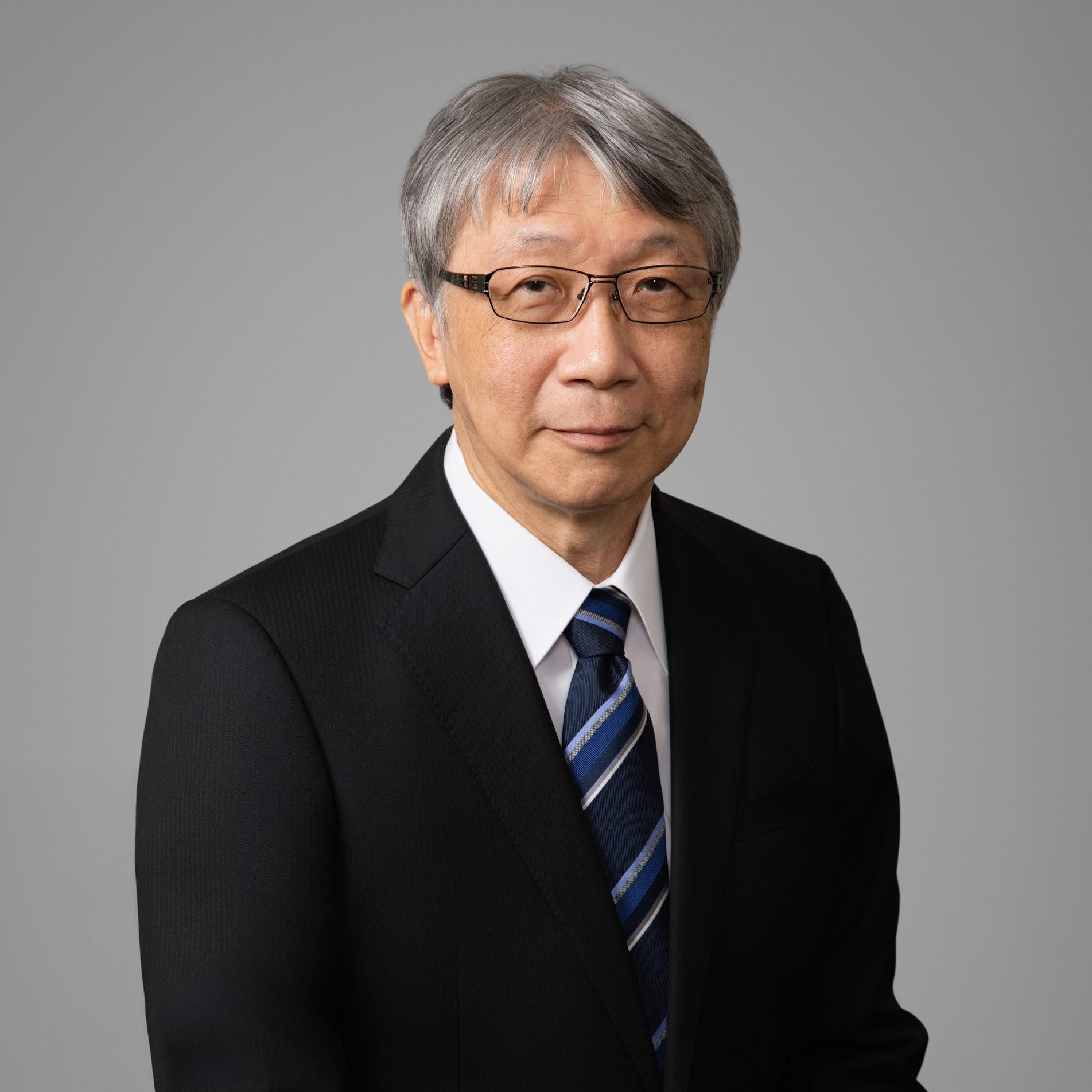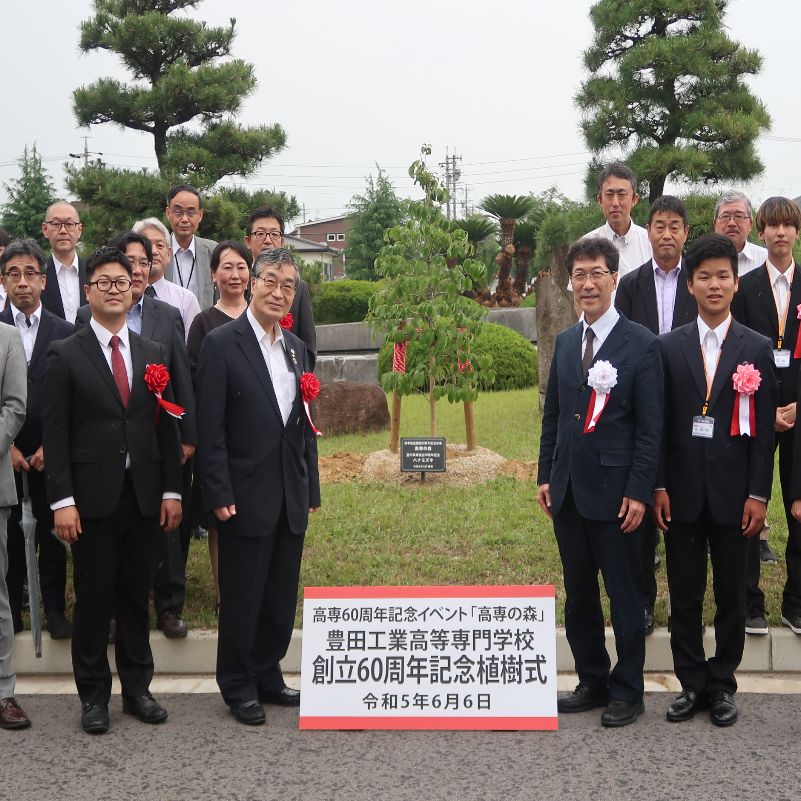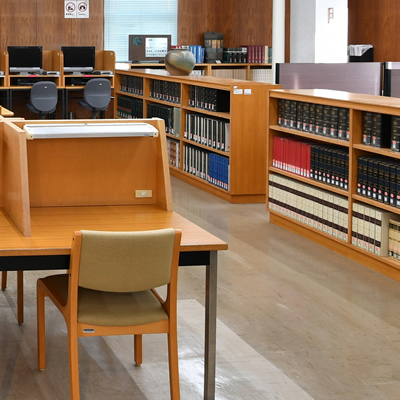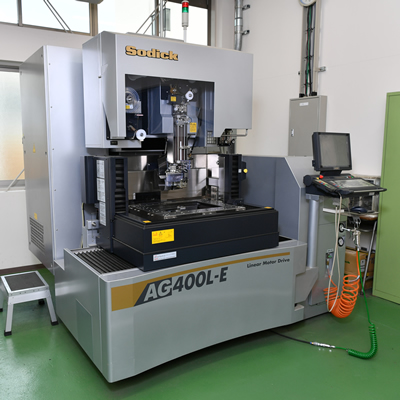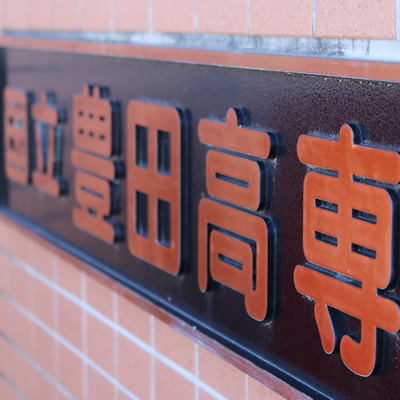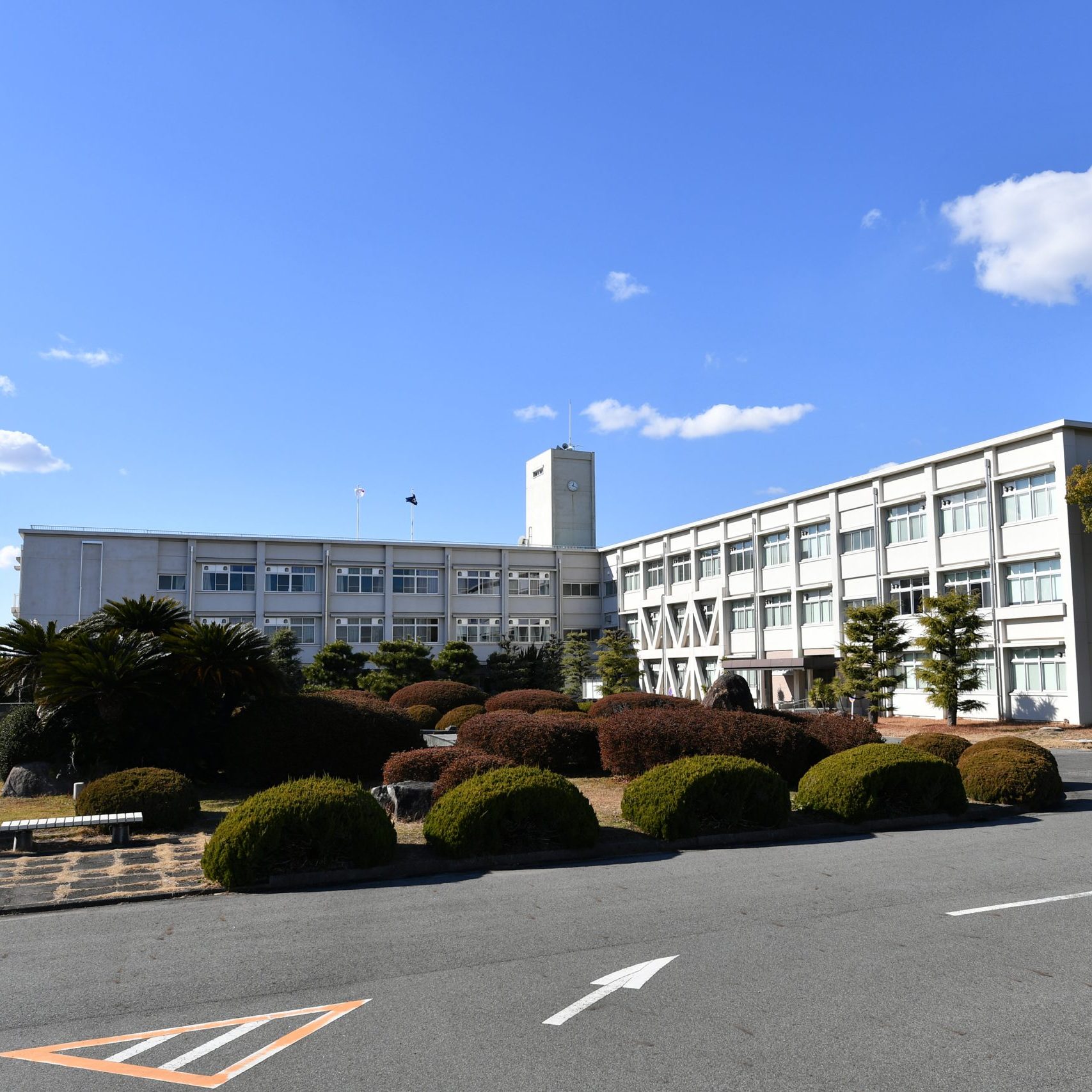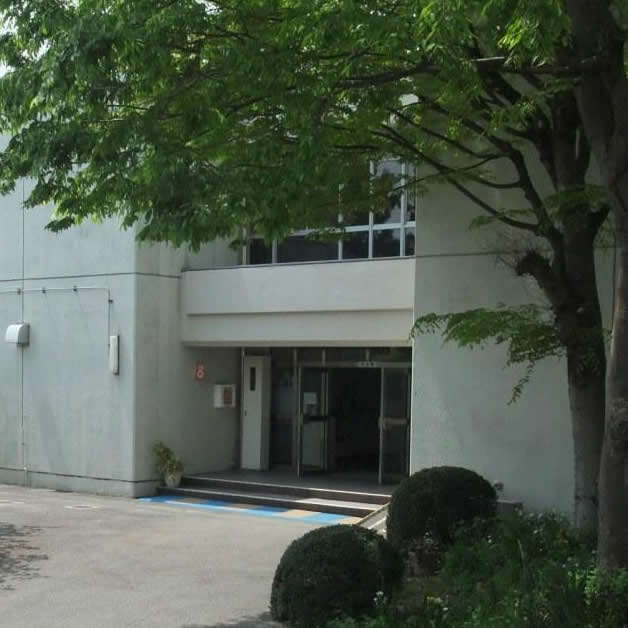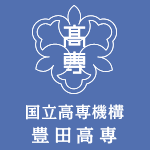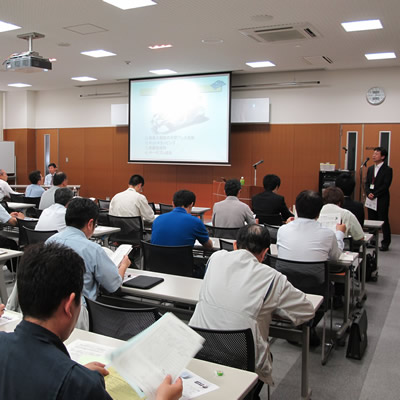Origin of the school emblem
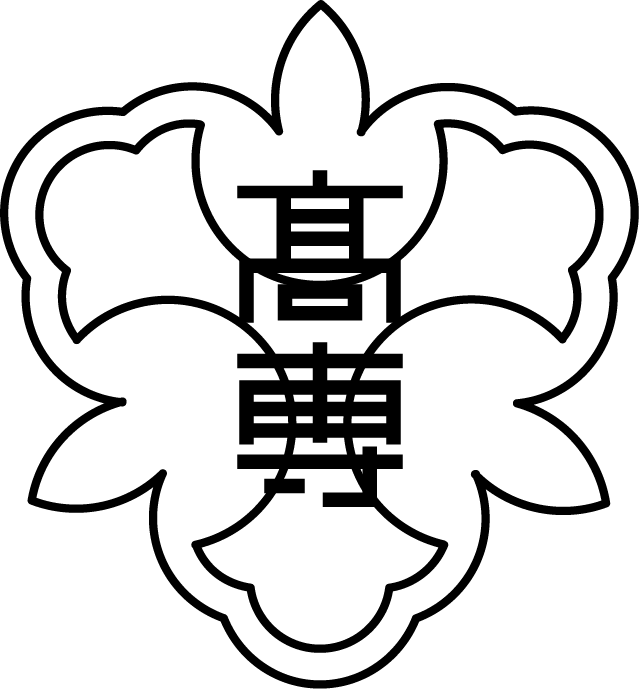
The prefectural flower of Aichi Prefecture is the kakitsubata. This is derived from the Ise Monogatari, which is popular among the population, “The Ninth Dan of the East of the Emperor of the Nine Days” and the song “Du Waka”.
・・・・・ in the country of the three rivers, the eight bridges, and the place of the eight. If you are a spider in a river that goes by water, you will be able to make eight bridges. And he sat under the shade of a tree by the river, and ate dry rice. It blooms interestingly in the stream. When a person sees it, he says, “Put the five letters on the phrase, and soothe the heart of the journey.”
And if thou wilt be clothed, thou shalt come all the way, and thou shalt travel all the way, and thou shalt weep and weep ・・・・・
Today, the Yatsubashi Bridge actually exists as the Mikawa Hachibashi, and there is a temple in the place where it is thought to be the actual Yatsubashi, and it is a historical site with a young tree planted in it. It is about 12 km southwest of the main school.
There is no other prefectural flower based on such an old historical and literary origin, and it can be said that it speaks to the climate of Aichi Prefecture and the interests of the people of Aichi Prefecture.
The school emblem was designed based on this young man. In addition, the basis of the design is the image of the coat of arms of Japan. The simplicity, stability, and power of the composition of Japan’s coat of arms have recently been reaffirmed by designers, and it seems that it is being questioned as a subject of lectures at art universities.
The school emblem did not simply reproduce the old coat of arms, but deformed it to give it strength, stability, purity, and youthfulness in a simple figure. Except for the letters inside, the fact that the drawing is the same from all three sides expresses a sense of stability and moderation, and the petals are made into three pieces, the pith is boldly divided into three thick parts, and Toyoda’s initials T are expressed.
National Institute of Technology (KOSEN), Toyota College School Song
history
AprAMarchMarchMarchFebruaryMarchMarchAprMarchFebruaryAprTheMarchConstruction ofJan.JanTheMarchJanTheMarchJuneTheMarchMarchConstruction ofMarchAprSeptemberConstruction ofSep.AprAprMarchMarchTheMar.FebMarMarDecember,AprilMarMarAprilMarTheJanuaryMarchAprilAprilMarchJulyTheMarchAprilFebruaryTheFebruaryTheMarch
| . 1963 | law to partially amend the Act on the Establishment of National Schools (Act No. 69 of Showa 38) was promulgated, and National Institute of Technology (KOSEN), Toyota College was established with the Department of Mechanical Engineering, the Department of Electrical and Electronic Engineering, and the Department of Architecture. Taro Suga, a professor at Nagoya University and a doctor of science, was appointed as the first president of the school. The opening ceremony and the first entrance ceremony were held at Toyota Kaikan in Toyota Town, Toyota Motor Corporation, Toyota Motor Corporation. The facility in the company’s head office factory was used as a temporary school building, and the former Toyota City Hall in Nishimachi, Toyota City, was inaugurated as a temporary student dormitory. |
| 1964 | The first phase of construction (school building, guard room, garage, student dormitory) was completed. We moved from a temporary school building and a temporary dormitory to a new school building and a new student dormitory. |
|---|---|
| December | Athletics stadium maintenance work was completed. |
| 1965 | The second phase of construction (school building, mechanical training factory, student dormitory) and baseball field maintenance work were completed. |
| 1966 | The third phase of construction (school building, student dormitory, gymnasium) was completed. |
| April | With the application of the Ministerial Ordinance (Ministry of Education Ordinance No. 17 of Showa 40) that partially amends the Enforcement Regulations of the National School Establishment Act, a department system was established as an administrative organization, and the General Affairs Division and the Accounting Division were established. |
| August | Our school presided over the 1st National College of Technology Sports Festival. The swimming pool was completed. |
| 1967 | The fourth phase of construction (student dormitory) was completed. |
| 1968 | The fifth phase of construction (student dormitory, martial arts hall, student assembly room) was completed. The first graduation ceremony was held. |
| April | A ministerial ordinance (Ministry of Education Ordinance No. 6 of Showa 43) was promulgated to partially revise the Enforcement Regulations of the National School Establishment Act, and the Department of Civil Engineering was added. Boarding school was implemented for the lower grades. |
| , 1969 | The 6th phase of construction (Department of Civil Engineering Building, student dormitory) was completed. |
| . 1970 | A decree (Education Instruction Order No. 19 of Showa 45) was promulgated to partially revise the instruction on the administrative department of the National Institute of Technology (KOSEN), and the Student division was placed in the administrative department. |
| 1972 | The construction of the library was completed. |
| 1973 | Construction of the computer room and the Toyota Memorial Hall was completed. |
| May | The 10th anniversary ceremony was held. |
| . 1974 | President Taro Suga has retired. Nagoya University professor Doctor of Engineering Ichiro Sakaki was appointed as the second president of the school. |
| 1976.10 | President Yoneichiro Sakaki became the president of Toyohashi University of Technology. Masato Ichikawa, a professor of engineering at Nagoya University, was appointed as the third principal of the school. |
| November | construction of the extension of the student cafeteria was completed. |
| , 1977 | elevators for the disabled, domestic wastewater treatment facilities, and other installation work was completed. |
| 1978 | The Department of Mechanical Engineering, fluid experiment and heat transfer experimental equipment shed construction of a new shed was completed. |
| October | The VTR editing device was completed. |
| . 1979 | The construction of a new building for the Department of Architecture, a repeating loading test building, was completed. |
| March | construction of the new training camp was completed. The Data Station was opened as a shared use facility within the university. |
| , 1980 | The construction of the new Soil Laboratory Building of the Department of Civil Engineering was completed. |
| . 1981 | construction of the new welfare hall was completed. |
| July | The construction of the school building extension was completed. |
| , 1982 | The construction of the second gymnasium was completed. |
| 1983 | Strength Test Center for Material and Structure was established as a joint use facility within the university. |
| November | The 20th anniversary ceremony was held. |
| , 1985 | President Masato Ichikawa has retired. |
| April | Koji Iwata, a professor of engineering at Nagoya University, was appointed as the 4th president of the school. |
| , 1986 | a new student dormitory was completed. |
| , 1987 | Renovation work on all student dormitories has been completed. |
| . 1987 | A ministerial ordinance (Ministry of Education Ordinance No. 10 of Showa 62) was promulgated to partially revise the Enforcement Regulations of the National School Establishment Act, and the Department of Information and Computer Engineering was added. |
| 1988 | the new building of the Department of Information Engineering was completed. |
| 1990 | President Koji Iwata has retired. |
| October | Professor of Nagoya University, Dr. Kenji Horii, was appointed as the 5th president of the school. |
| . 1993 | A ministerial ordinance (Ministry of Education Ordinance No. 11 of Heisei 5) was promulgated to partially revise the Enforcement Regulations of the National School Establishment Act, and the Department of Civil Engineering was reorganized into the Department of Civil Engineering. |
| November | The 30th anniversary ceremony was held. |
| . 1994 | Advanced Engineering Course (Electronic and Mechanical Engineering Course, Civil Engineering and Architecture Course, and Computer Science Course) were established. |
| , 1995 | President Kenji Horii has retired. |
| April | Nagoya University Professor Yukio Kito, Doctor of Engineering, was appointed as the 6th president of the school. |
| , 1996 | construction of the new Advanced Engineering Course building was completed. The first certificate of completion ceremony was held. |
| July | The Data Station was reorganized into the Multimedia Information Education Center. |
| Apr. 1999 | A ministerial ordinance (Ministry of Education Ordinance No. 12 of 11) was promulgated to partially revise the Enforcement Regulations of the National School Establishment Act, and the Department of Electrical Engineering was renamed the Department of Electrical and Electronic Systems Engineering. |
| November | Construction of a new welfare facility (cafeteria) was completed. |
| 2000 | President Yukio Kito has retired. |
| April | Fuori Takagi, a professor of engineering at Nagoya University, was appointed as the 7th president of the school. |
| 2001.11 | The school building (lecture hall and soil laboratory) was completed. |
| 2002.11 | The Regional Joint Techno Center was completed. |
| 2003 | Renovation work (classrooms) of the school building was completed. |
| November | A lecture was held to commemorate the 40th anniversary of the company’s founding. |
| 2004 | Renovation work of the school building (Department of Electrical and Electronic Systems Engineering Building and Department of Architecture Building) was completed. |
| April | The name of the training factory was changed to a manufacturing center. It becomes a national college of technology established by the National Institute of Technology. |
| 2005 | President Fuori Takagi resigned. |
| April | Ryoichi Suematsu, a professor of engineering at Nagoya University, was appointed as the 8th president of the school. |
| October | Renovation work of the school building (seismic retrofitting of the General Administration Building, Library, and Gymnasium 1) and library elevator work were completed. |
| 2006 | The renovation work of the Department of Environmental and Urban Engineering building was completed. |
| , 2008 | Due to the reorganization of the administrative organization, there will be two sections, the General Affairs Division and the Student Affairs Division. |
| 2009 | Elevator construction (Department of Environmental and Urban Engineering Building and Major Building) was completed. |
| 2011 | President Ryoichi Suematsu resigned. |
| , 2011 | Yoshiaki Takai, a professor of engineering at Nagoya University, was appointed as the ninth president of the school. |
| 2013 | construction of a new student dormitory (Soshi Dormitory) was completed. |
| November | The 50th anniversary ceremony was held. |
| 2014 | Renovation work on the school building (Department of Mechanical Engineering Building and General Department Building) was completed. |
| 2017 | Renovation work of the school building (general department building and administration building) was completed. |
| President Yoshiaki Takai retired. | |
| 2017 | Tomohiko Tagawa, a professor of engineering at Nagoya University, was appointed as the 10th president of the school. |
| September | The renovation of the student dormitory (Taishi dormitory) was completed. |
| 2019 | The Multimedia Information Education Center was reorganized into the ICT Security Education Center. |
| 2020 | The Creative Studio was completed. |
| 2021 | construction of a new student dormitory (Kishi Dormitory) was completed. |
| 2022 | President TAGAWA Tomohiko resigned. |
| The construction of a new student dormitory (Eishi dormitory) was completed. | |
| 2022 | Nagoya University Professor YAMADA Yoji, Ph.D. in Engineering, was appointed as the 11th president of the school. |
| 2023 | Renovation work of the school building (Lecture Room Building Annex) was completed. |
| March | construction of a new student dormitory (Yushi Dormitory) was completed. |
| December | The 60th anniversary ceremony was held. |
| 2024 | construction of a new student dormitory (Meishi dormitory) was completed. |
| 2025 | President YAMADA Yoji retired. |
| April | President AWAGA Kunio, Doctor of Science, Nagoya University, was appointed as the 12th president of the school. |
| The Social Collaboration Research Center of Technology was reorganized into the Collaboration and Co-creation Center. |

